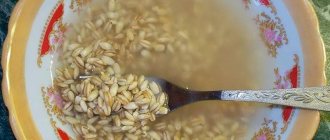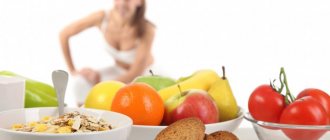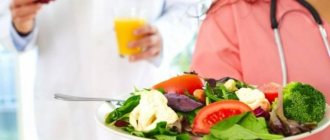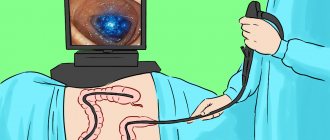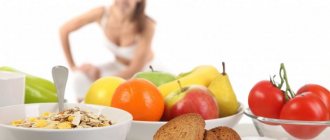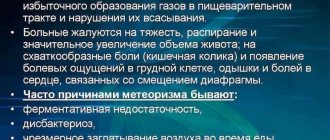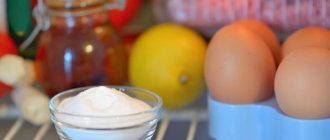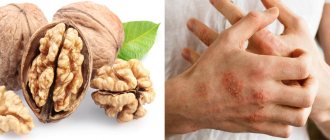Proper nutrition is the key to health. And in the presence of diseases, it ensures their easier course until complete recovery. No exception is the diet for hepatitis C, which is characterized by a number of features. Compliance with all recommendations is mandatory.
What is hepatitis C?
Hepatitis C is an inflammation of the liver. Many people know this disease as “jaundice.” It is characterized by a deterioration in the functions of the liver, which filters the blood, provides resistance to various infections, and processes substances entering the body.
As a result of inflammation, the activity of the organ is disrupted. A visible symptom is yellowness of the skin and the white of the eyeball. The state of health deteriorates significantly, the temperature rises, general fatigue and malaise appear. The patient loses his appetite and feels abdominal pain. The urine takes on a dark tint, and the stool, on the contrary, becomes pale.
The onset of the disease is possible as a result of alcohol abuse and the ingestion of toxins into the body. Hepatitis C can also be caused by medications or previous illnesses. A common cause is the hepatitis C virus. This occurs through the entry of infected blood into the body of a healthy person. Therefore, this disease is very common among drug addicts who share needles and syringes. The virus is transmitted sexually extremely rarely.
The intensity of the disease is determined by many factors. Initially, the acute form occurs. However, under the influence of negative influences it can become chronic.
In 20% of cases, the virus self-destructs within six months without additional medical intervention. In the remaining 80%, the virus remains inside the body for life. A third of virus carriers develop cirrhosis of the liver, which subsequently requires transplantation of this vital organ. The development of liver cancer is a small percentage.
The role of proteins in the patient's diet
People with hepatitis C should never give up protein. Only completely healthy people can afford vegetarianism. A favorite argument of patients who decide to become vegan is that cereals and some vegetables also contain protein.
The problem is that plant protein is completely unequal in nutritional value to animal protein. To properly provide amino acids and minerals, daily consumption of chicken egg whites, chicken and turkey meat, fish and seafood is necessary. The patient will feel cheerful, and the disease will not manifest itself in any way on the physical level.
The role of nutrition in the treatment of patients with hepatitis C
There is a treatment for hepatitis C. As a result of many studies, special drugs were invented that can fight the disease. They are safe and effective. The strategy is prescribed by a specialist based on the test results obtained and the general condition of the patient.
Proper nutrition also plays an important role. The diet for hepatitis C is characterized by certain features, the observance of which is vital. Meals are divided into 5-6 times a day. At the same time, nutritionists recommend sticking to a time frame. This means that, regardless of the circumstances, you need to eat at the same time.
When diagnosed with hepatitis, the diet implies that daily caloric intake should not exceed 2200-2300 kcal. A smaller quantity is also undesirable. This figure is the best option for the full functioning of the body with hepatitis C.
The method of cooking also plays a fundamental role. Steamed dishes are recommended. Oven-baked or boiled food is welcome. Only warm foods should be consumed; cold or too hot foods are considered unacceptable as they can be harmful.
When diagnosed with hepatitis C, the diet implies a clear percentage of proteins, fats and carbohydrates. Half are carbohydrates, about 300-350 grams. The remaining half is divided between proteins and fats in equal proportions, about 80-90 grams.
Diet recipes

Many patients who are advised to adhere to dietary standards for hepatitis C are at first very worried about the need to limit themselves in food. They assume that diet food is always tasteless and monotonous. But this is a completely erroneous opinion.
The diet for hepatitis C is quite varied. You can come up with many options for breakfast, lunch, and dinner. Ideas and tips are easy to find on the Internet. The main thing is not to overdo it with seasonings and fat content of products. It is recommended not to use flavor enhancers if possible. Food can be salted, but only a little before serving.
Check out several recipes for Diet No. 5 for Hepatitis C.
Potato soup with broccoli
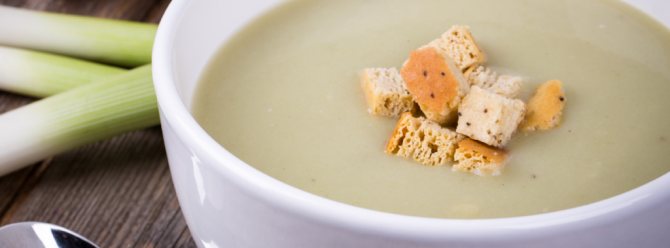
Peel two potatoes. Cut in half, pour one liter of boiling water. Cook at low simmer for 10 minutes. Add half a cup of washed rice. Boil for another 10 minutes. Finely chop the broccoli florets and grate a small carrot. Add to puree soup. Remove the potatoes to a plate, mash with a fork and return to the dish. Boil for another 5 minutes. Add a little salt, add a level teaspoon of butter.
Meatballs
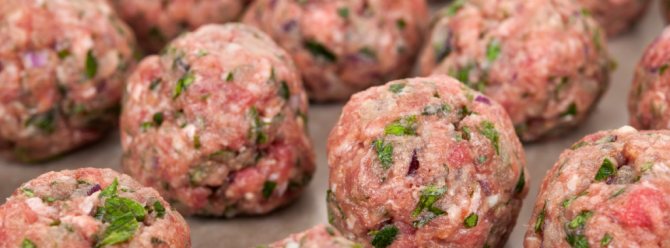
Boil half a cup of rice until half cooked. Cool. Can be done under running cold water. Add 300 grams of ground beef, chicken or turkey, the white of one egg, a tablespoon of flour, prunes, and salt. Rinse 5 prunes in advance, soak a little in water, cut into small pieces.
Form small meatballs. 3-4 centimeters in diameter. Place on a wire rack or sieve. Steam.
Chicken Pasta Casserole
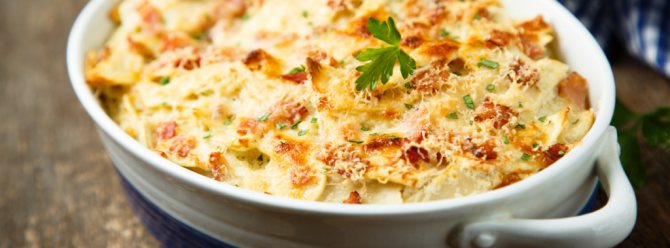
Boil chicken fillet, one piece. Finely chop. Cook any pasta (horns, shells, feathers, etc.) until half cooked. In a small baking sheet, lightly greased, place layers of pasta, chicken, pasta. Pour in a mixture of a glass of skim milk and one egg. Bake in the oven at 180 degrees for 10 minutes.
Instead of pasta, you can use boiled potatoes.
List of approved products
For patients, there are strict restrictions on food products; a clear diet for hepatitis C is being developed with a menu for every day. The list should be followed so as not to harm the body. First of all, you should take care of a sufficient amount of vegetables and fruits in your diet. They are rich in vitamins and minerals. These components ensure proper functioning of the liver. It is recommended to eat fruits or vegetables at every meal.
Protein should be delivered to the body through foods such as turkey and fish, tofu and eggs, and beans. Thanks to a sufficient amount of protein, the body receives energy, all organs and systems function properly. The risk of developing diabetes mellitus is reduced.
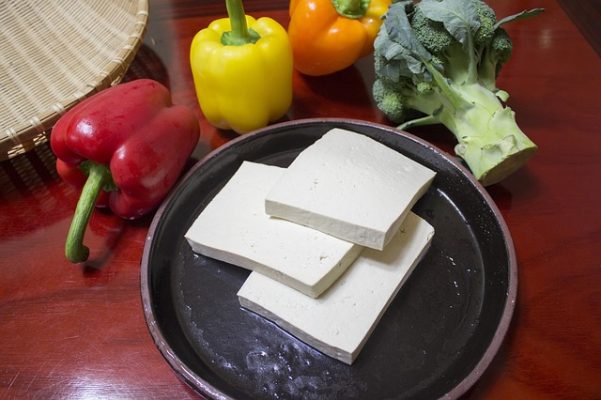
Dairy products also saturate the body with protein. In addition, the necessary calcium and vitamin D are supplied. However, when diagnosed with hepatitis, the diet and nutrition should include only low-fat or low-fat dairy products.
You can provide your body with carbohydrates through wild rice, oatmeal, whole oats or rye. Consumption of these products allows you to improve your overall well-being, get the minerals and B vitamins necessary for health. The best option is to prepare dishes immediately before eating.
The first month of food restriction may cause some discomfort. However, then one gets used to the new diet; the diet for hepatitis no longer seems so difficult. In addition, the idea that a balanced, well-thought-out menu helps to cope with the disease makes it easier and more conscious to give up junk food.
Diet effectiveness
The effectiveness of the diet for liver cirrhosis has been scientifically proven. Experts note that as a result of following certain rules, hepatocytes (cells of the affected organ) stop decaying. Moreover, their recovery is gradually taking place. This is due to several positive changes that the diet implies. The first is refusal of food that increases the secretory activity of the pancreas and stomach. The more active the work of these organs when digesting food, the greater the load on the liver. Special diets exclude foods that require increased bile production.
Secondly, by consuming choleretic food, the elimination of toxins is improved. Substances that can harm already damaged hepatocytes are removed from the body. Detoxification allows you to slow down the death of cells, and also reduces the severity of unpleasant side symptoms (dizziness, pain in the liver, changes in skin color).
Finally, another positive change is to eat foods rich in vitamins and minerals that are good for the liver. Due to their entry into the body, cell regeneration is accelerated. This allows the disease to go into remission. The patient ceases to experience side symptoms; the only restriction in his life remains diet.
Special nutrition in itself cannot lead to an improvement in the patient's condition. The effectiveness of the treatment menu is noticeable if it is combined with the use of hepatoprotectors and other restorative medications. The speed at which positive results manifest varies from person to person. Some patients notice an improvement in their condition within a few weeks, while others need about a year for remission to occur. It all depends on the condition of the liver in which diet therapy began.
List of prohibited products
There are a number of foods that can be harmful to someone with hepatitis C. They should be avoided or reduced to a minimum. This will ensure that the negative effects on the liver are limited.
As you know, fats are necessary for the full functioning of the body, tissue protection, and transportation of useful elements. But in patients with hepatitis C, fats can provoke unwanted abnormalities and lead to the development of liver cirrhosis. Consequently, nutritionists recommend eating unsaturated fats found in nuts, olive oil, and fish oil.
Restrictions apply to salt consumption. With hepatitis C, it is undesirable to accumulate fluid in the abdomen, which can be caused by salt. Therefore, to control its content, it is recommended to avoid semi-finished and processed foods.
Blood glucose levels also influence the course of the disease. Its excessive content can provoke diabetes mellitus. This fact will complicate treatment. Therefore, foods containing a lot of glucose should become taboo.
An inflamed liver has difficulty processing iron. In order not to overload the body, it is recommended to limit its consumption. However, you should not completely exclude foods containing iron, since this microelement is necessary for the full functioning of vital organs. The main rule is moderate consumption.
Advantages and disadvantages
| pros | Minuses |
|
|
Diet for acute hepatitis
Taking into account all permitted and prohibited foods, doctors are developing a special diet for hepatitis C, a menu for every day. They differ depending on the characteristics of the organism, as well as the form of the disease itself. The nature of hepatitis C should also be taken into account.
The acute form of the disease can occur as a result of infection or have a toxic-allergic nature. In this case, the liver parenchyma is affected, the full functioning of the organ and metabolism are disrupted. Possible intoxication of the body.
The diet for viral hepatitis C aims to reduce the load on the liver. It is necessary to help the body optimize the functions of the inflamed organ, reduce fatty infiltration, and stimulate regenerative processes. The required amount of proteins is introduced into the diet, about 100-110 grams, which are saturated with lipotropic substances.
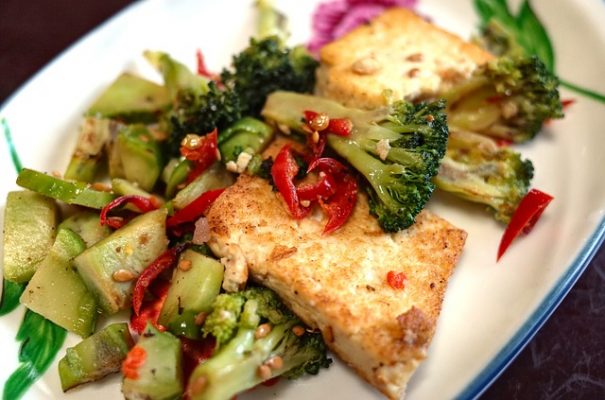
To saturate with fat, vegetable oil of various origins (sunflower, corn, olives) is introduced in moderate quantities. It is acceptable to use butter. Other sources of natural fat should be limited.
Nutritionists recommend enriching your diet with easily digestible carbohydrates to increase the liver’s resistance to toxic agents and counteract fatty infiltration. Vitamins are taken whose action is aimed at restoring liver function. The diet for acute hepatitis allows you to drink liquid in unlimited quantities. Once every 7-10 days you should have a fasting day.
Recommended Products Table

What can and cannot be eaten if you have hepatitis C?
For convenience, we have presented a list of permitted and prohibited products in the table: Table of recommended and prohibited products for hepatitis C
| Allowed for hepatitis C | Prohibited for hepatitis C |
| Crackers, crackers, biscuits, dry bread | Freshly baked bread, cakes |
| Beef, veal, rabbit, turkey, chicken | Goose, duck, lamb, pork |
| Cod, pike perch, bream, hake, pollock, navaga, perch | Salmon, mackerel, chum salmon |
| Low-fat cottage cheese, milk, mild cheese | Fat cottage cheese, large quantities of sour cream |
| Viscous, crumbly porridge | Broths |
| Pasta | Sour: sorrel, spinach, sauerkraut, cranberry |
| Milk sausage, doctor's sausage, sausages | Smoked: meat, fish, sausages, cheeses |
| Vegetables | Legumes: peas, lentils, beans |
| Greens (a little) | Spices, hot sauces |
| Fresh berries, compotes, jelly, preserves, honey | Marinades, canned food |
| Marshmallows, marshmallows, marmalade | Nuts, halva, chocolate |
| Weak tea, coffee with milk | Soda, kvass, strong coffee and tea |
What should you not eat if you have hepatitis C under any circumstances? Any fast food can be considered an extremely harmful product. Such food contains life-threatening dyes, flavor enhancers and food additives. Alcohol and nicotine also overload the liver. For this reason, you will have to stop drinking alcohol and tobacco products.
Diet for chronic hepatitis
In the chronic form of hepatitis C, deviations from the diet prescribed by the doctor are unacceptable. This is explained by harm to the inflamed liver. The goal of proper nutrition is to help the damaged organ and reduce the impact of the virus. Following a diet increases the effectiveness of drug treatment and increases the chances of recovery.
A balanced diet saturates the body with essential substances, microelements, and vitamins. To improve your well-being, food should not only be healthy, but also tasty. Don’t think that a diet means tasteless dishes. The first thing you should do is study the list of prohibited foods to avoid their consumption. From the remaining list you can prepare healthy dishes that are in no way inferior to restaurant delights. The main thing is to show your imagination.
Unlike acute, the diet for chronic hepatitis is not considered so strict. However, fried foods are prohibited. Dishes should be boiled, baked or steamed. Eating fatty meat is also unacceptable, as it overloads the already weakened liver. Rich broths made from meat, fish or mushrooms can have a detrimental effect.
Smoked, salty and spicy foods are excluded from the diet. When diagnosed with hepatitis C, diet and food are prohibited from mayonnaise, mustard, and ketchup. During digestion, they release toxins, and a damaged liver is unable to neutralize them. As a result, intoxication of a weakened body may occur.
The daily menu should contain 100 grams of protein, the percentage of animal origin is 60, 400 grams of carbohydrates, 90 grams of fat, the percentage of plant origin is 30. The number of products must correspond to a calorie content of 2500-3000 kcal. Salt is limited to 4-5 grams. The diet for chronic hepatitis C implies a minimum amount of fluid equal to 1.5-2 liters. All food must be divided into four or five meals. In this case, the intervals should be equal.
Fully or partially limited products
The diet for chronic hepatitis excludes the use of:
- Concentrated meat/fish broths, instant soups.
- Fatty meats/fish, smoked meats, chicken skin, sausages, goose and duck meat, salted fish, fish caviar, bacon, pepper, horseradish, mayonnaise, ketchup, mustard, freeze-dried products.
- Offal (liver, kidneys, brains), canned food, cooking/animal fats.
- Vegetables with coarse fiber (radish, radish, turnip, white cabbage) and legumes.
- Products containing preservatives/flavoring additives, confectionery products with a long shelf life.
- Hard-boiled/fried chicken eggs.
- Products containing oxalic acid/essential oils (radish, onion, radish, garlic, sorrel, spinach).
- Cakes, muffins, full-fat milk/cream, fried pies, pastries, puff pastry.
- Sour berries/fruits (cranberries, green apples, red currants, black currants).
- Strong coffee/tea, chocolate, cocoa.
Table of prohibited products
| Proteins, g | Fats, g | Carbohydrates, g | Calories, kcal | |
Vegetables and greens | ||||
| canned vegetables | 1,5 | 0,2 | 5,5 | 30 |
| eggplant | 1,2 | 0,1 | 4,5 | 24 |
| swede | 1,2 | 0,1 | 7,7 | 37 |
| peas | 6,0 | 0,0 | 9,0 | 60 |
| bulb onions | 1,4 | 0,0 | 10,4 | 41 |
| chickpeas | 19,0 | 6,0 | 61,0 | 364 |
| cucumbers | 0,8 | 0,1 | 2,8 | 15 |
| salad pepper | 1,3 | 0,0 | 5,3 | 27 |
| parsley | 3,7 | 0,4 | 7,6 | 47 |
| radish | 1,2 | 0,1 | 3,4 | 19 |
| white radish | 1,4 | 0,0 | 4,1 | 21 |
| iceberg lettuce | 0,9 | 0,1 | 1,8 | 14 |
| tomatoes | 0,6 | 0,2 | 4,2 | 20 |
| dill | 2,5 | 0,5 | 6,3 | 38 |
| beans | 7,8 | 0,5 | 21,5 | 123 |
| horseradish | 3,2 | 0,4 | 10,5 | 56 |
| spinach | 2,9 | 0,3 | 2,0 | 22 |
| sorrel | 1,5 | 0,3 | 2,9 | 19 |
Berries | ||||
| grape | 0,6 | 0,2 | 16,8 | 65 |
Mushrooms | ||||
| mushrooms | 3,5 | 2,0 | 2,5 | 30 |
| marinated mushrooms | 2,2 | 0,4 | 0,0 | 20 |
Nuts and dried fruits | ||||
| nuts | 15,0 | 40,0 | 20,0 | 500 |
| peanut | 26,3 | 45,2 | 9,9 | 551 |
| seeds | 22,6 | 49,4 | 4,1 | 567 |
Cereals and porridges | ||||
| millet cereal | 11,5 | 3,3 | 69,3 | 348 |
Flour and pasta | ||||
| pasta | 10,4 | 1,1 | 69,7 | 337 |
| dumplings | 11,9 | 12,4 | 29,0 | 275 |
Bakery products | ||||
| buns | 7,9 | 9,4 | 55,5 | 339 |
| Rye bread | 6,6 | 1,2 | 34,2 | 165 |
Confectionery | ||||
| pastry cream | 0,2 | 26,0 | 16,5 | 300 |
| shortbread dough | 6,5 | 21,6 | 49,9 | 403 |
Ice cream | ||||
| ice cream | 3,7 | 6,9 | 22,1 | 189 |
Chocolate | ||||
| chocolate | 5,4 | 35,3 | 56,5 | 544 |
Raw materials and seasonings | ||||
| mustard | 5,7 | 6,4 | 22,0 | 162 |
| mayonnaise | 2,4 | 67,0 | 3,9 | 627 |
Dairy | ||||
| milk 4.5% | 3,1 | 4,5 | 4,7 | 72 |
| cream 35% (fat) | 2,5 | 35,0 | 3,0 | 337 |
| whipped cream | 3,2 | 22,2 | 12,5 | 257 |
| sour cream 30% | 2,4 | 30,0 | 3,1 | 294 |
Cheeses and cottage cheese | ||||
| parmesan cheese | 33,0 | 28,0 | 0,0 | 392 |
Meat products | ||||
| fatty pork | 11,4 | 49,3 | 0,0 | 489 |
| salo | 2,4 | 89,0 | 0,0 | 797 |
| bacon | 23,0 | 45,0 | 0,0 | 500 |
Sausages | ||||
| smoked sausage | 9,9 | 63,2 | 0,3 | 608 |
Bird | ||||
| smoked chicken | 27,5 | 8,2 | 0,0 | 184 |
| duck | 16,5 | 61,2 | 0,0 | 346 |
| smoked duck | 19,0 | 28,4 | 0,0 | 337 |
| goose | 16,1 | 33,3 | 0,0 | 364 |
Fish and seafood | ||||
| smoked fish | 26,8 | 9,9 | 0,0 | 196 |
| black caviar | 28,0 | 9,7 | 0,0 | 203 |
| salmon caviar granular | 32,0 | 15,0 | 0,0 | 263 |
| salmon | 19,8 | 6,3 | 0,0 | 142 |
| canned fish | 17,5 | 2,0 | 0,0 | 88 |
| salmon | 21,6 | 6,0 | — | 140 |
| trout | 19,2 | 2,1 | — | 97 |
Oils and fats | ||||
| animal fat | 0,0 | 99,7 | 0,0 | 897 |
| cooking fat | 0,0 | 99,7 | 0,0 | 897 |
Alcoholic drinks | ||||
| dry red wine | 0,2 | 0,0 | 0,3 | 68 |
| vodka | 0,0 | 0,0 | 0,1 | 235 |
| beer | 0,3 | 0,0 | 4,6 | 42 |
Non-alcoholic drinks | ||||
| soda water | 0,0 | 0,0 | 0,0 | — |
| cola | 0,0 | 0,0 | 10,4 | 42 |
| instant coffee dry | 15,0 | 3,5 | 0,0 | 94 |
| sprite | 0,1 | 0,0 | 7,0 | 29 |
| * data is per 100 g of product | ||||
Diet No. 5 for hepatitis C
For each specific patient diagnosed with hepatitis C, diet 5 and a sample menu are taken as the basis for individual nutrition. Allowed products and dishes made from them are offered. The list looks like this:
- herbal or green tea, coffee is replaced with chicory;
- dried or yesterday's wheat bread;
- soups based on vegetables, dairy products, fruits with the addition of cereals and pasta;
- chicken, beef, veal, lean fish. They can be consumed boiled or baked. Stewing is allowed provided that the fat is removed before consumption;
- brown rice, oats, buckwheat, pumpkin are used to prepare porridges;
- vegetables and fruits in fresh, unprocessed form. Attention should be paid to bananas;
- lemon can be consumed with a small amount of sugar;
- boiled onion;
- olive, butter, vegetable oil;
- freshly squeezed juices from berries, fruits and vegetables. Vegetable juices, especially pumpkin juices, deserve attention;
- vegetable stew cooked in the oven;
- dairy products – kefir, low-fat sour cream, cottage cheese;
- low-fat fermented milk products;
- boiled or baked vegetables;
- peas, beans, beans;
- dried fruits – prunes, dried apricots, raisins;
- Beekeeping products for those with a sweet tooth will be a safe replacement for unhealthy treats.

Based on the above list, a menu is compiled. In this case, products should be alternated for 7-10 days. An example of one day looks like this:
- breakfast consists of two egg whites, steamed cutlets, vegetables or fruits;
- a snack includes kefir or fresh fruit;
- lunch: vegetable puree soup with lean meat, steamed fish, fresh vegetable salad, weak herbal tea;
- the afternoon snack consists of milk porridge or fruit pudding;
- dinner: pasta, vegetable gravy, boiled beans, low-calorie cookies with honey.
We can conclude that nutrition while following a diet is varied. The main advantage is the availability of healthy products that do not harm the body. After a few months, heavy, unhealthy food will no longer attract a patient with hepatitis C. Gluttony and heaviness in the stomach will disappear. Proper, balanced nutrition will become the norm.
Important! Informational article! Before use, you should consult a specialist.
Indicative menu
Patients with hepatitis C and their relatives should not worry about dietary restrictions. A therapeutic diet is not a diet for weight loss, so a sick person should not feel deprived and hungry. There are many recipes by which you can prepare dishes that will not be inferior in taste to dishes made from “forbidden” products.
As an example, you can take an approximate dietary menu for a week (1 – breakfast, 2 – second breakfast, 3 – lunch, 4 – afternoon snack, 5 – dinner):
- Monday Oatmeal with raisins, tea.
- Baked pumpkin.
- Vegetarian soup with rice, boiled chicken, kefir.
- Herbal decoction.
- Boiled potatoes, soaked herring, fresh cabbage and carrot salad with sunflower oil, tea.
- Cottage cheese casserole, weak coffee.
- Carrot-apple cutlets, plum juice.
- Cheese pancakes with low-fat sour cream, unsweetened yogurt.
- Milk rice porridge, coffee with milk.
- Semolina porridge, tea.
- Boiled potatoes with herbs, chicory coffee.
By combining dishes from different days in any order, you can diversify the patient’s diet according to his taste.
The recipes should be healthy and not burden the liver. Menu for virus carriers For virus carriers who do not have clinical signs of liver damage, the diet is not so strictly limited. Virus carriers are only recommended to limit the amount of animal fats in the diet, exclude extractive substances (strong broths, coffee), hot spices, canned and smoked foods, reduce the daily amount of salt to 4-6 g. The consumption of alcohol, carbonated drinks, and foods with preservatives remains prohibited , pickles, smoked foods, canned food, spices.
Remember that diet is also treatment. If it is used correctly and combined with drug therapy, you can achieve the desired goal - recovery.

